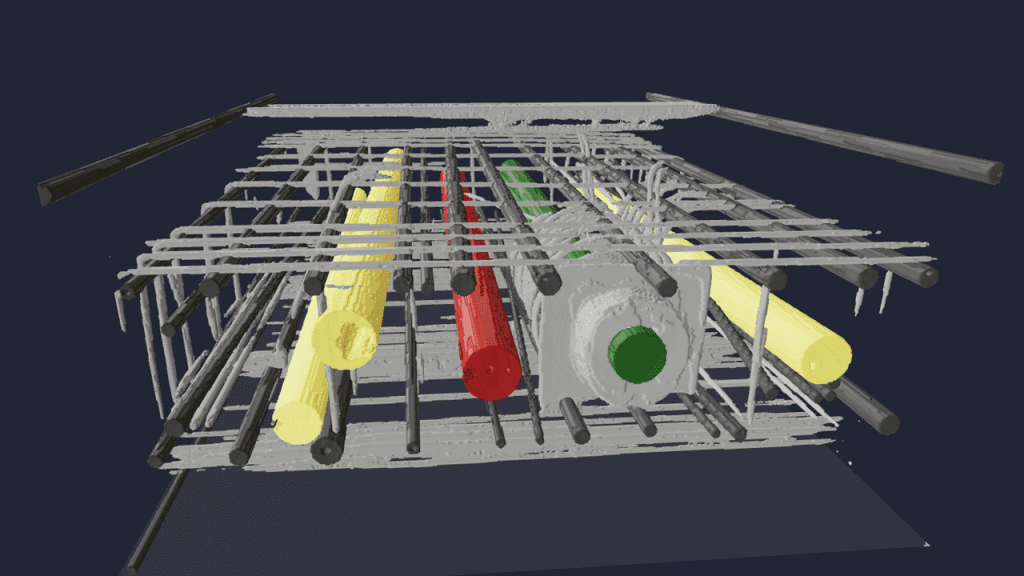| World-leading research programme delivers breakthrough results in non-destructive testing, promising fewer road closures and enhanced safety |

A world-leading research programme that could transform traditional approaches to the maintenance of England’s motorways and major A-roads has announced significant technological advances today.
The results demonstrate how state-of-the-art technologies could now be deployed on the network’s ageing infrastructure to reveal a more accurate analysis of asset condition – reducing unplanned road closures and enhancing safety.
The Structures’ Moonshot Project, initiated by National Highways and led by AtkinsRéalis and Jacobs, has concluded the initial phases of its investigation into non-destructive testing (NDT) technologies and revealed its findings to more than 200 international industry delegates.
The project focused on analysing England’s highway structures with hidden critical components which are difficult and expensive to inspect, such as post-tensioned bridges.
NDT technologies use a range of techniques to build a picture of the condition of a structure, highlighting any defects hidden beneath concrete surfaces. They aim to complement and improve on traditional inspections and help to mitigate the need to undertake physical investigations, which can require road or lane closures.
The project’s innovative approach has led to key industry breakthroughs, including the development of digital twins which integrate various NDT technologies to provide a more holistic and accurate assessment of structural conditions.
Additionally, this programme is addressing a fundamental industry problem: whilst awareness of NDT technologies is high, there is a lack of awareness of the wide spectrum of technologies available and understanding in terms how of how they could be deployed to optimise inspection results. The research team has produced practical summaries and guidance on NDT methods, recognising that tailored solutions are required.
The Structures’ Moonshot research team has conducted more than 60 in-depth tests since August 2023, covering both established and experimental technologies. This included testing 20 types of advanced NDT technologies and gathering input from more than 20 specialist companies, globally.
Trials were conducted on purpose-built, full-scale mock-ups of bridge sections as well as parts of decommissioned bridges such as the A14 Huntingdon Viaduct.
One of the largest NDT technology effectiveness studies globally, details will be revealed at a conference in Birmingham today, with findings shared among the wider structural engineering community.

Colin George, deputy head of structures at National Highways said: “The Structures’ Moonshot is about driving innovation through investment in new technologies. These technologies are set to provide us with game-changing solutions in terms of how we maintain the structures on our road network.
“The challenges of maintaining an ageing bridge stock are very real. It is vital that we ensure that first and foremost our structures are safe to use. The technologies we’re looking at have the potential to achieve that goal, but also to ensure we’re spending our funding effectively. As a result, we would expect to see a reduction in planned and unplanned closures on our very busy network.
“Technology is rapidly influencing the transport sector and it’s crucial we continue to invest in finding new ways of maintain the network. National Highways needs to keep innovating to improve experiences on the road, while getting people where they need to be, safely and reliably.”
One of the advanced technologies tested was muon tomography by Estonian company GScan. This creates a detailed 3D model of the internal fabric of a structure, enabling expert evaluation of the condition of the buried steel components and concrete substrate without the need for costly and disruptive investigations.
Chis Mundell, technical director at AtkinsRéalis said: “With more than half of England’s bridges set to exceed 50 years of age by 2030, we urgently need accurate and efficient methods to assess their condition. Structures’ Moonshot has been a unique opportunity to comprehensively test and validate the performance of various technologies – some will revolutionise bridge assessments equivalent to x-rays for doctors and patient diagnosis.
“The testing has reinforced the view that there is no ‘silver bullet’ for structural investigations, but NDT technology integration is transforming how we maintain these complex structures. Having completed the first phases largely in controlled environments, we’re now looking forward to deploying these technologies on operational structures.”
There are more than 20,000 structures on roads managed by National Highways, ranging from small culverts and gantries to large bridges. Many of those structures need repairs costing millions of pounds each time an intervention is required.
Richard Sanderson, senior vice president Transportation at Jacobs said: “Maintaining high standards and public safety across our road network requires continuous innovation.
“The ability to assess the condition of structures remotely, or with less physical intrusion, is a significant step forward and is a natural evolution to existing methods of investigation, which typically involve in-situ inspection and testing with temporary road closures. These emerging technologies offer the potential to support more efficient, targeted interventions, contributing to a more sustainable, safe and responsive road network. Jacobs is excited to be involved with these groundbreaking trials, which we anticipate will ultimately equip bridge engineers with an ever-wider toolkit for management of bridge assets.”
The project now enters phase three, which will see wider use of the new technologies and approaches on operational National Highways assets and is expected to complete in mid-2026.
Building, Design & Construction Magazine | The Choice of Industry Professionals





